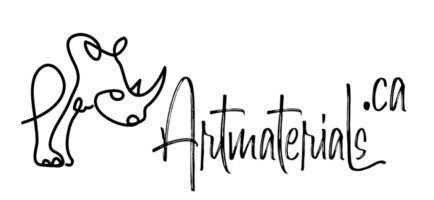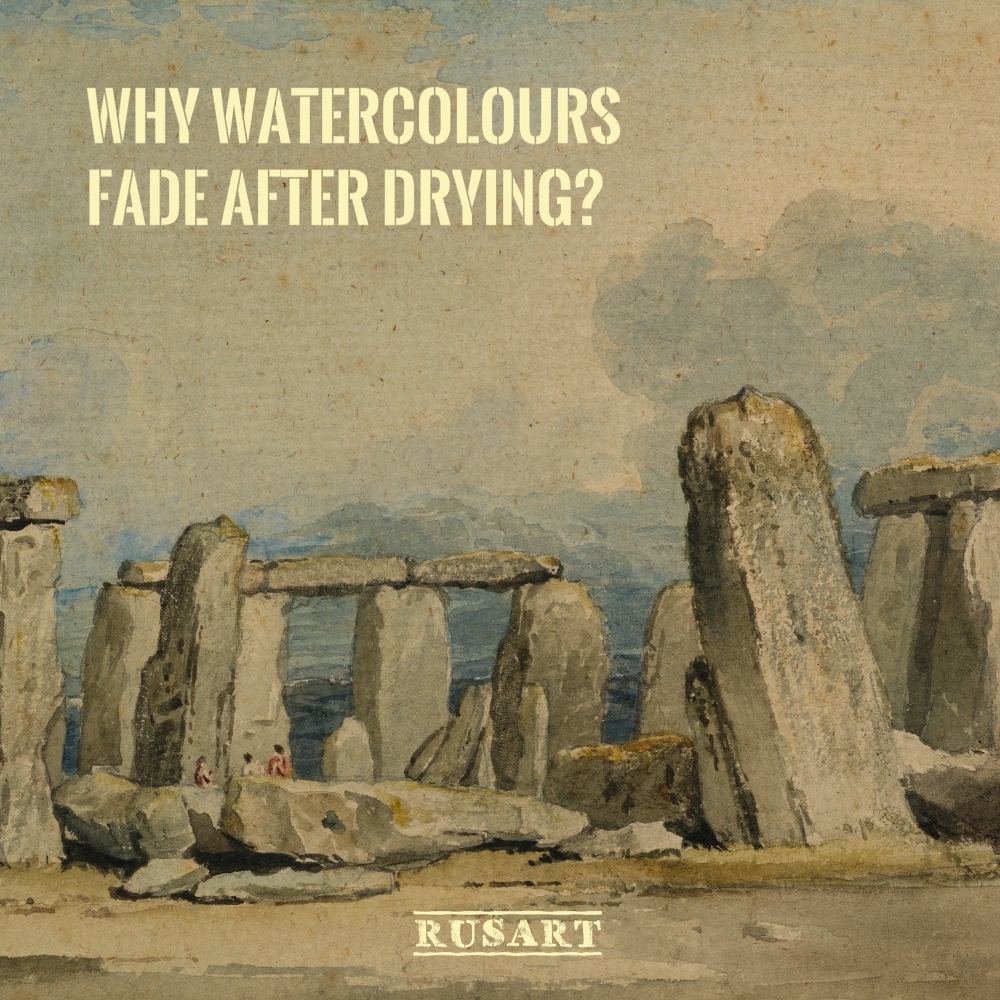Watercolours are very enjoyable, but right after drying results may not be what you expected: colours changed, faded and become pastel-looking. Why does it happen?
Excessive paint fillers
In a modern world we buy paints at stores and unfortunately we can’t be sure about what’s inside. To increase profits, some manufacturers excessively use fillers. For example, ultramarine may include a lot of clay, yellow colours – chalk, red colours barium sulphate. When water evaporates, chalk layer shows up and instead of vibrant colours we see pastel tones.
For some pigments mineral base may be necessary. Synthetic organic pigments, such as pyrrole red (PR254), Phthalo blue (PB15), Phthalo Green (PG7), as well as bismuth yellos and many others will need a base to show their brightness in full. Like pyrrole red (PR254) without any base will look transparent ruby, Benzimidazolone Yellow (PY154) will not cover paper evenly without a mineral base. So, sometimes, calcium carbonate (PW18), kaolin (PW19) or Barium Sulfate (PW21) are really good to have, but excessive amounts of these ingredients lead to colour fading after drying. Watercolours in pans tend to have more of them as fillers and extenders, while watercolours in tubes normally contain more glycerine and preservatives.
Chalk in paper
Watercolorists usually prefer cold press, acid-free, 300 by weight cotton paper. These characteristics provide more controllable painting. However, that’s not everything that we need to know. Paper, that we’re buying for watercolour is white. It may be brilliant white or kind of ivory, but anyways – white. This means that fiber was coloured and bleached. Normally, for paper coloration manufacturers use titanium white as the most stable and popular white pigment, but they may add chalk and other components listed above (PW18, PW19, PW21 etc.) that show off through paint layer and cause fading.
Lack of arabic gum
Historically, watercolour binder was arabic gum. It’s a natural sap from acacia trees growing from Senegal on the west coast of Africa all the way to Pakistan and India. Its sap dissolves in water and turns into slightly amber coloured solution, which works as a glue for pigment particles. However, arabic gum is quite expensive and requires some stages of purifying, heating etc. to be used as a binder. As it’s considered to be polysaccharides manufacturers replace arabic gum with dextrine (kind of sugar). Most manufactures claiming that paints have arabic gum as a binder in fact use more dextrine than the gum.
Dextrine indeed works very well as a glue and creates good adhesion between particles, but it has very poor spreading properties. As a result, watercolours lose their natural gloss and shine and turn into matte and pastel looking surface.
By adding arabic gum watercolour medium you can improve paint performance.
(c) Rusart

























